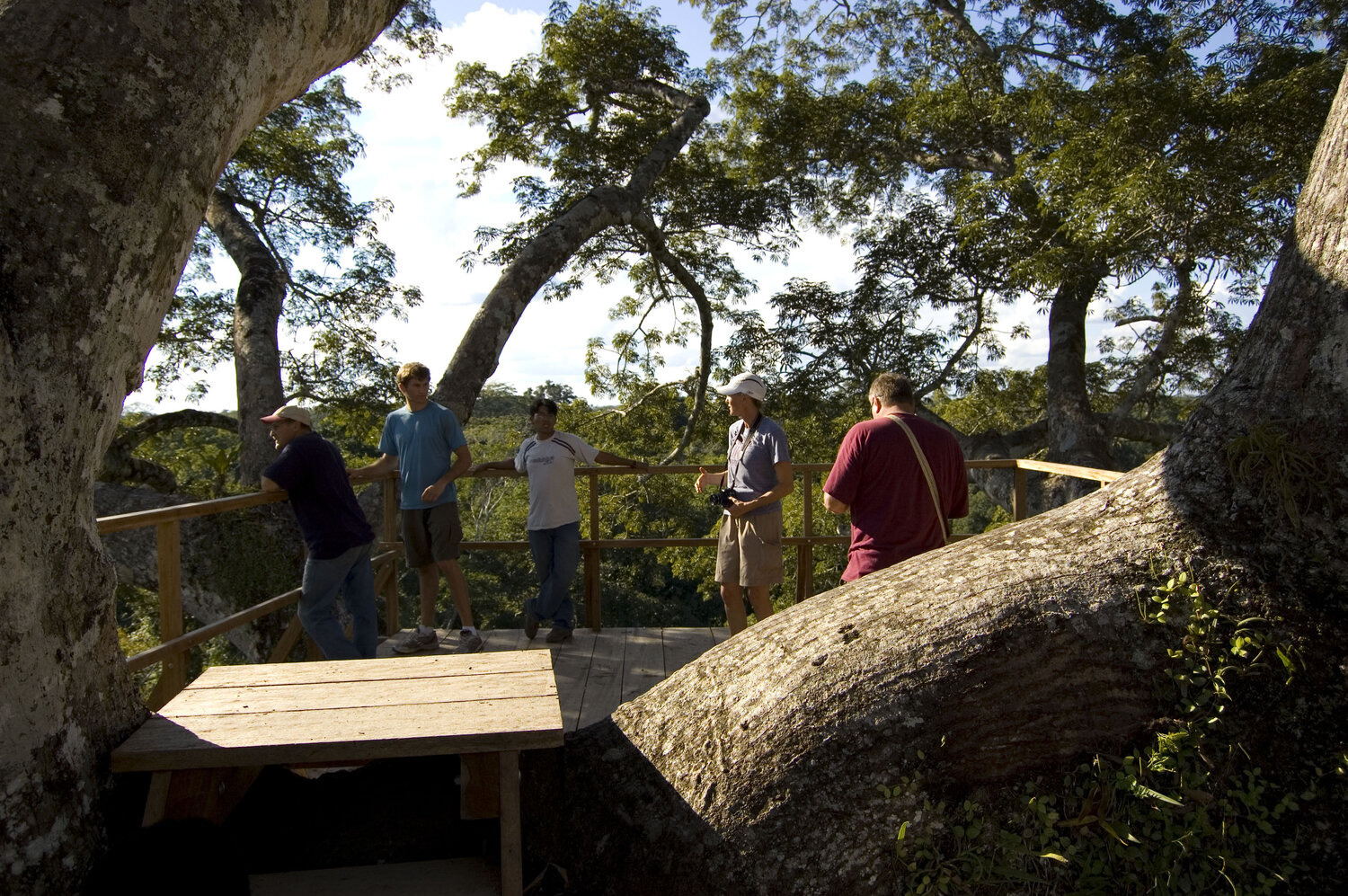protected area Amazon Trails Peru Rainforest
protected area amazonia Perú Manu
A study conducted in the Manu National Park in Peru sought to estimate jaguar density and understand their use of space, prey availability, and the presence of competitors. 136 pairs of camera traps were installed in an area of 820 km², divided into three blocks. Results showed that most prey species had significant occupancy, with no clear patterns in space use. The ocelot and the jaguar were the cats that showed a more intensive use of space, while the puma showed a less intensive use.
No patterns related to environmental variables,
prey availability or presence of competitors were found. The estimated population density of jaguars was 2 to 2.5 individuals per 100 km², which translates into a population of 193 to 241 jaguars in the lowlands of Manu National Park. These results suggest that jaguars are abundant in the study area and that both large carnivores and their prey can be found throughout the lowlands of the park. In addition, it is concluded that the presence of jaguars is not influenced by spatial variations of the habitat or by human pressures.
This study provides relevant information on the conservation status of jaguars in the Manu National Park, highlighting the importance of protected areas for the preservation of key species.
Manu National Park is an important protected area located in the Amazon region of Peru. Here are some relevant aspects of this protected area:
Ecological importance: Manu National Park is recognized as one of the areas with the greatest biodiversity in the world. It is home to a wide range of ecosystems, from the lowland rainforest to the Andes mountains. Its biological diversity includes thousands of plant species, hundreds of mammal and bird species, as well as numerous reptiles, amphibians and fish.
Biosphere Reserve:
Manu was declared a Biosphere Reserve by UNESCO in 1977, recognizing its importance for both biodiversity conservation and scientific research. This designation highlights the need to protect and sustainably manage the area's natural resources.
Indigenous Peoples:
Manu National Park is also home to indigenous communities, such as the Matsiguengas and Yines, who have lived in harmony with nature for centuries. These communities play an important role in conserving the land and preserving their traditional knowledge.
Unique Flora and Fauna:
The park is home to a wide variety of endemic and endangered species. Among them are the jaguar, the spectacled bear, the giant otter, the harpy eagle and the yellow-tailed woolly monkey, among others. The preservation of these habitats is essential to guarantee the survival of these emblematic species.
Sustainable tourism:
Manu National Park attracts many visitors interested in nature and wildlife. However, tourism in the park is carried out under strict regulations to minimize human impact on the ecosystem. Sustainable tourism is promoted, respecting capacity limits and promoting environmental education.
Conservation and management:
The National Service of Natural Areas Protected by the State (SERNANP) is the entity responsible for the management and conservation of the Manu National Park. Together with non-governmental organizations and local communities, monitoring, research and protection programs are implemented to ensure the long-term preservation of this valuable protected area.
The Manu National Park is an outstanding example of the importance of protected areas for the conservation of biodiversity and natural heritage. Its preservation guarantees the survival of numerous species and contributes to scientific research and responsible tourism in the region.

No hay comentarios:
Publicar un comentario